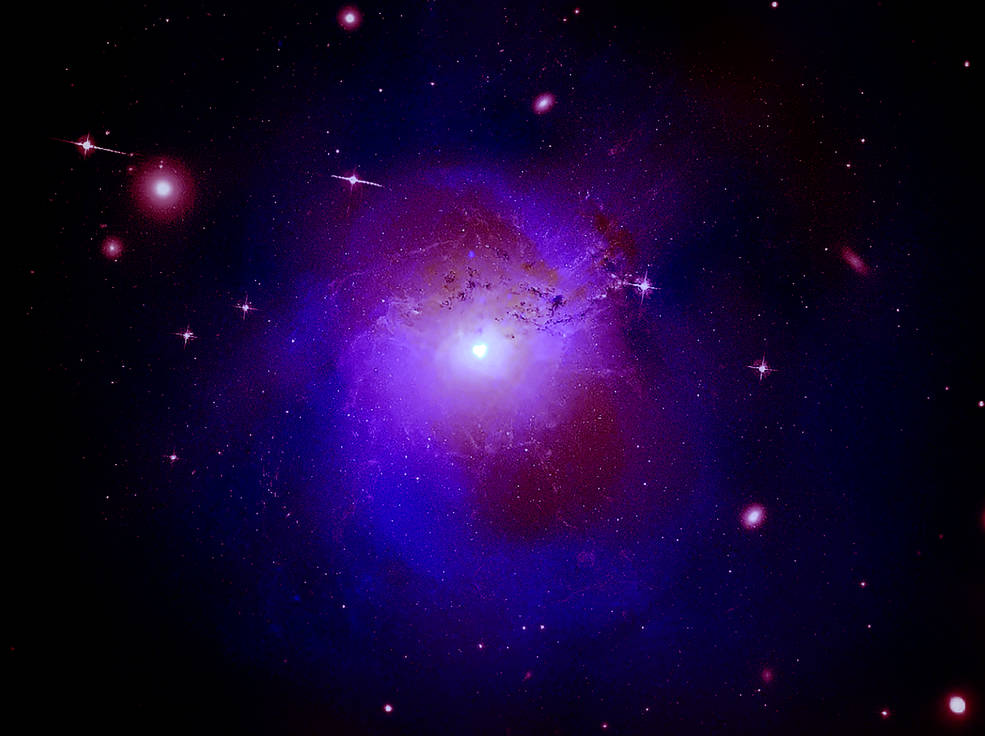An innovative interpretation of X-ray data from a cluster of galaxies could help scientists fulfill a quest they have been on for decades: determining the nature of dark matter.
The finding involves a new explanation for a set of results made with NASA’s Chandra X-ray Observatory, ESA’s XMM-Newton and Hitomi, a Japanese-led X-ray telescope. If confirmed with future observations, this may represent a major step forward in understanding the nature of the mysterious, invisible substance that makes up about 85% of matter in the universe.
“We expect that this result will either be hugely important or a total dud,” said Joseph Conlon of Oxford University who led the new study. “I don't think there is a halfway point when you are looking for answers to one of the biggest questions in science.”

Fig.Composite image of the Perseus galaxy cluster using data from NASA’s Chandra X-ray Observatory, ESA’s XMM-Newton and Hitomi, a Japanese-led X-ray telescope.Credits: X-ray: NASA/CXO/Fabian et al.; Radio: Gendron-Marsolais et al.; NRAO/AUI/NSF Optical: NASA, SDSS
The story of this work started in 2014 when a team of astronomers led by Esra Bulbul (Harvard-Smithsonian Center for Astrophysics in Cambridge, Mass.) found a spike of intensity at a very specific energy in Chandra and XMM-Newton observations of the hot gas in the Perseus galaxy cluster.
This spike, or emission line, is at an energy of 3.5 kiloelectron volts (keV). The intensity of the 3.5 keV emission line is very difficult if not impossible to explain in terms of previously observed or predicted features from astronomical objects, and therefore a dark matter origin was suggested. Bulbul and colleagues also reported the existence of the 3.5 keV line in a study of 73 other galaxy clusters using XMM-Newton.
The plot of this dark matter tale thickened when only a week after Bulbul’s team submitted their paper a different group, led by Alexey Boyarsky of Leiden University in the Netherlands, reported evidence for an emission line at 3.5 keV in XMM-Newton observations of the galaxy M31 and the outskirts of the Perseus cluster, confirming the Bulbul et al. result.
See: https://www.nasa.gov/mission_pages/chandra/news/a-new-twist-in-the-dark-matter-tale.html
